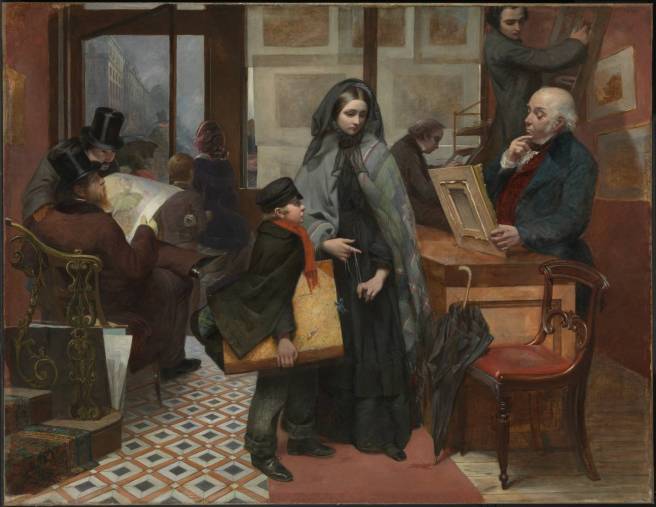
This piece is iconographically linked to a woman’s place in society. The main woman is in black, which means, since she is relatively young, she is most likely a widow. Therefore that means that she is most likely by herself in the opera box, as the painting does not show anyone else in the frame, and there is no indication that there is anyone else present. She has binoculars, which is an iconographic indication that she is actively engaged with her surroundings, and is persistently peering into the world, which in 19th century Europe was not a world that she was meant to inhabit in that way. From her left hand we see she is holding a fan, which contrasts greatly against her black dress and clothes. The fan itself and the patterns on it are Japanese, indicating that not only is she a woman who is aware of the fashion and the newest trends, but she is a modern woman, which further cements her place in the opera box. Finally, the biggest iconographic indication in the piece comes from the man on the other side of the theater, who is not in focus with the rest of the painting, and is actively staring at her. The viewer knows that he is actively staring at her as he is facing a different direction from the rest of the people, and seems to be leaning forward to point his own opera binoculars at her. His presence is iconographically linked to how men view woman who are independent and out on their own. He stares at her, as she is most likely alone and a widow, and this was not societally accepted during this time period. He goes out of his way to stare at her, and he represents the male dominated society that would stare and gawk at a woman who dares to act differently than societal norms would usually allow. The woman’s strength is shown through the fact that she does not seem to notice the man staring at her, and even if she did notice him it does not seem to affect her as she does not appear to care.








